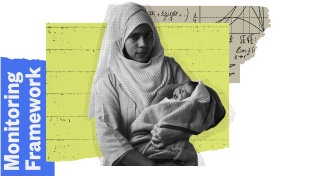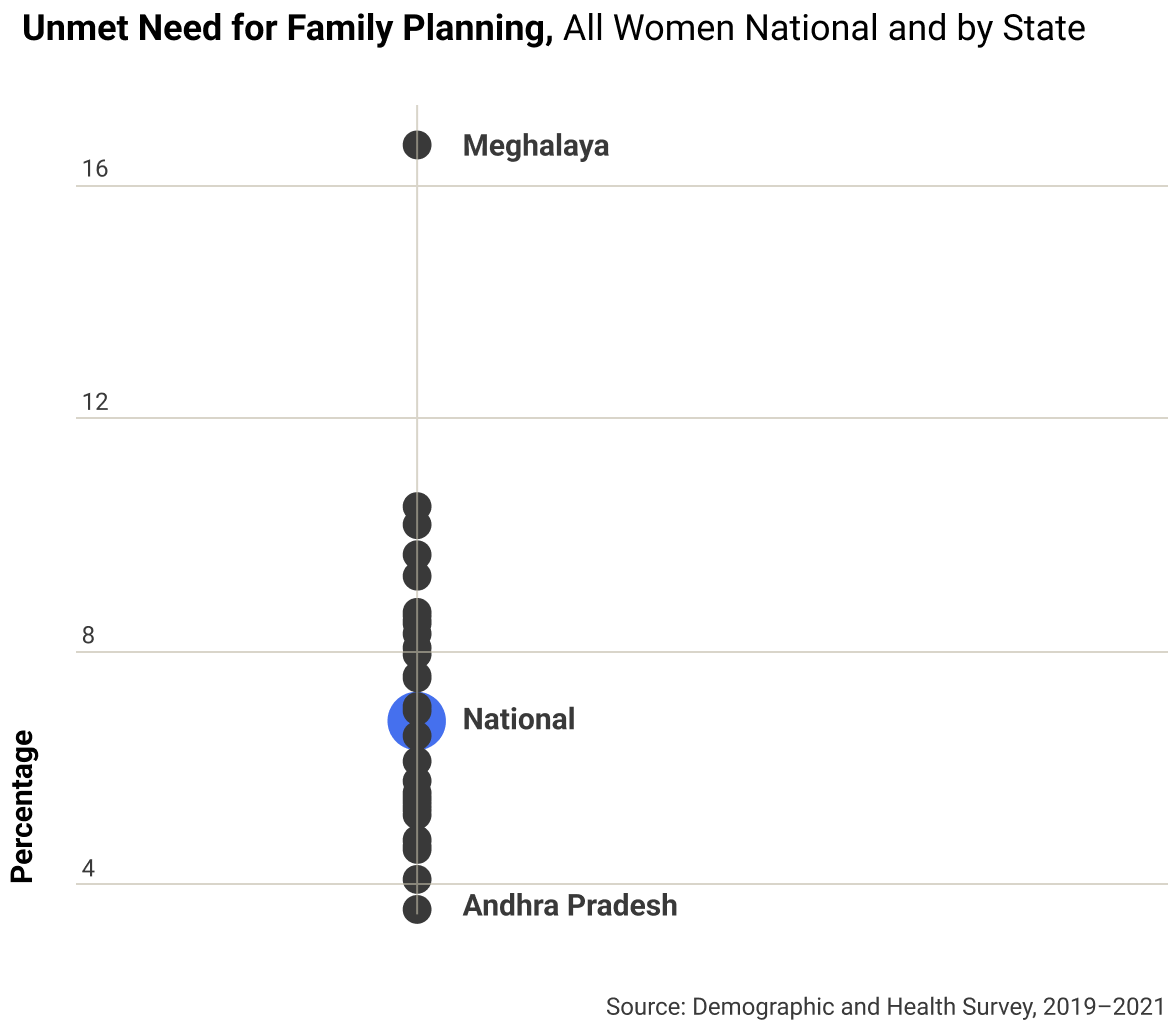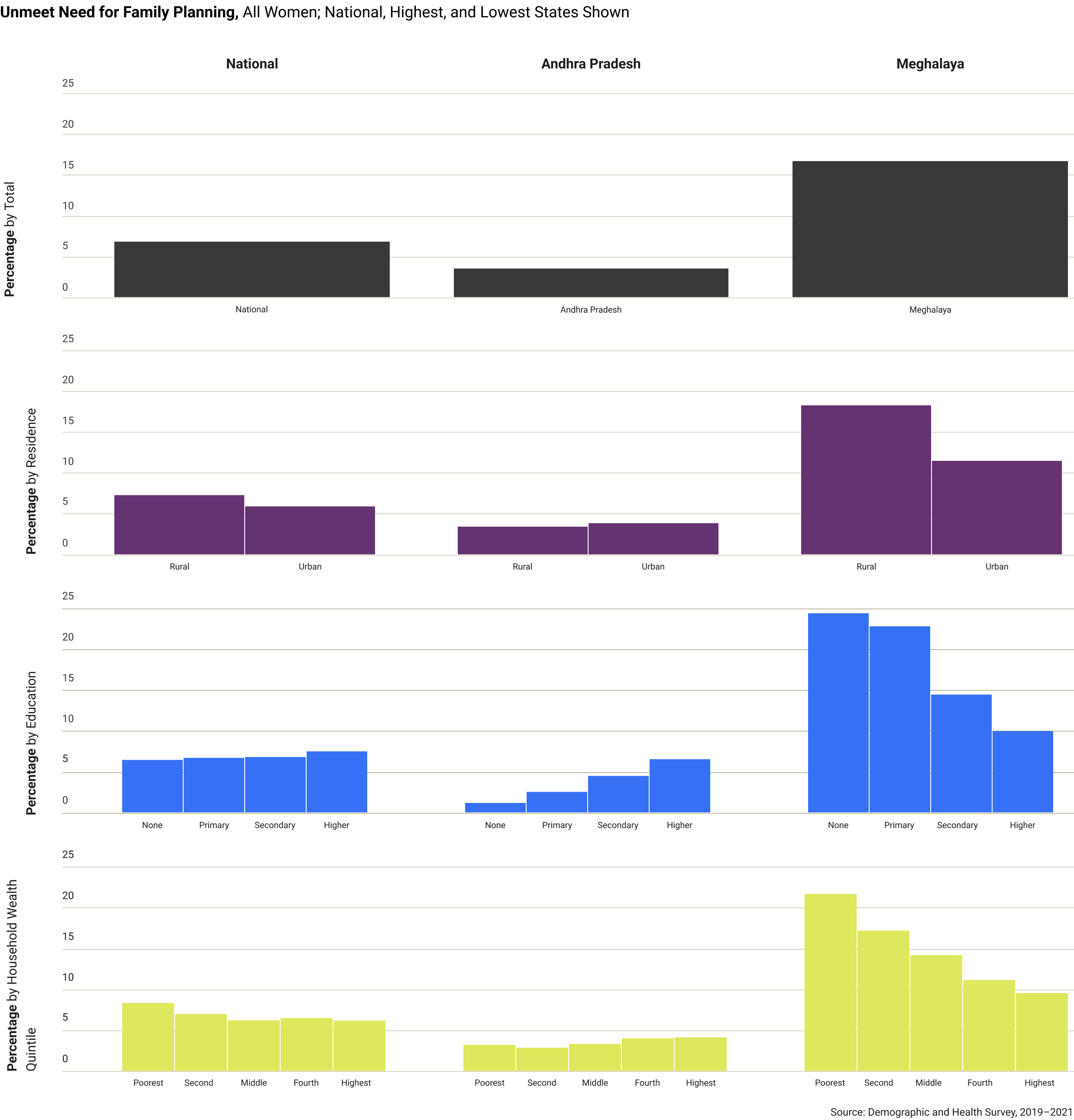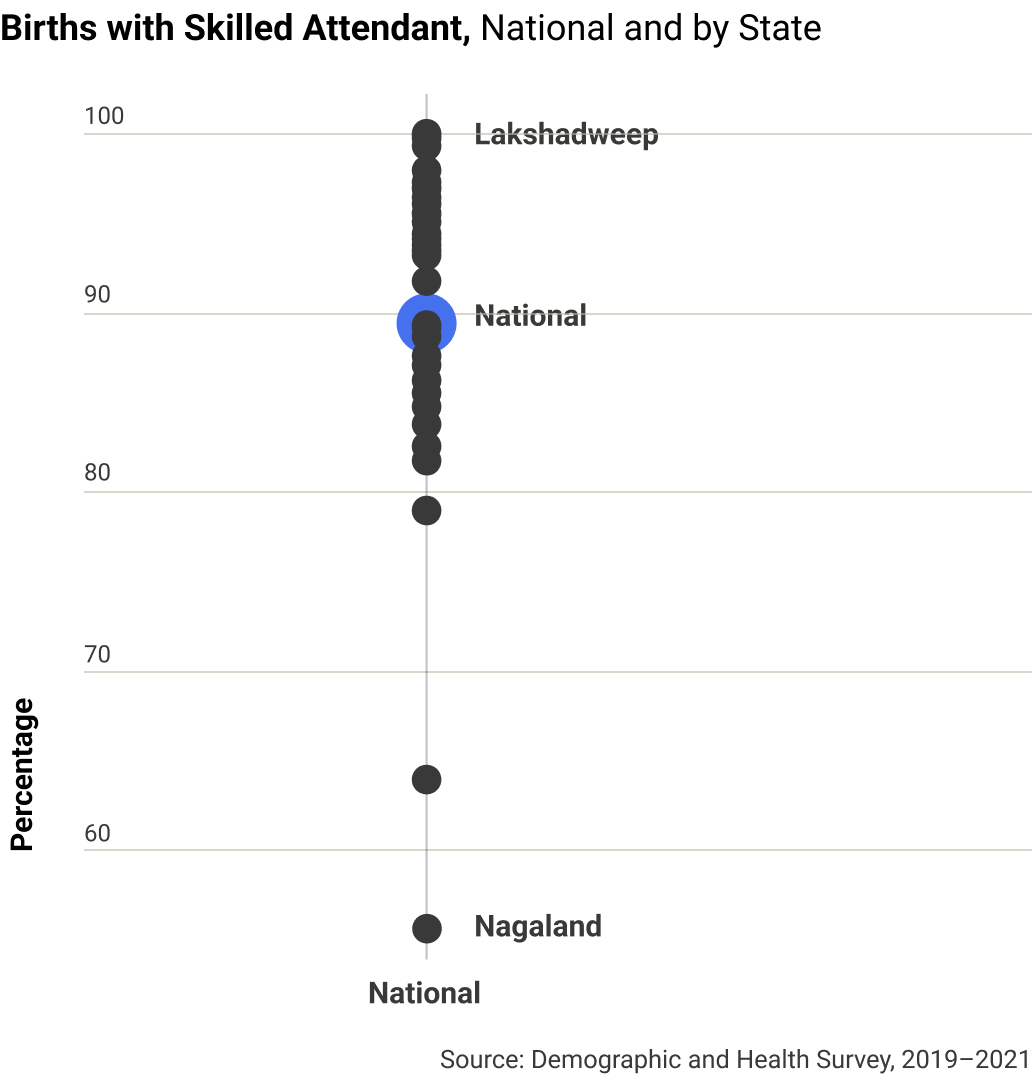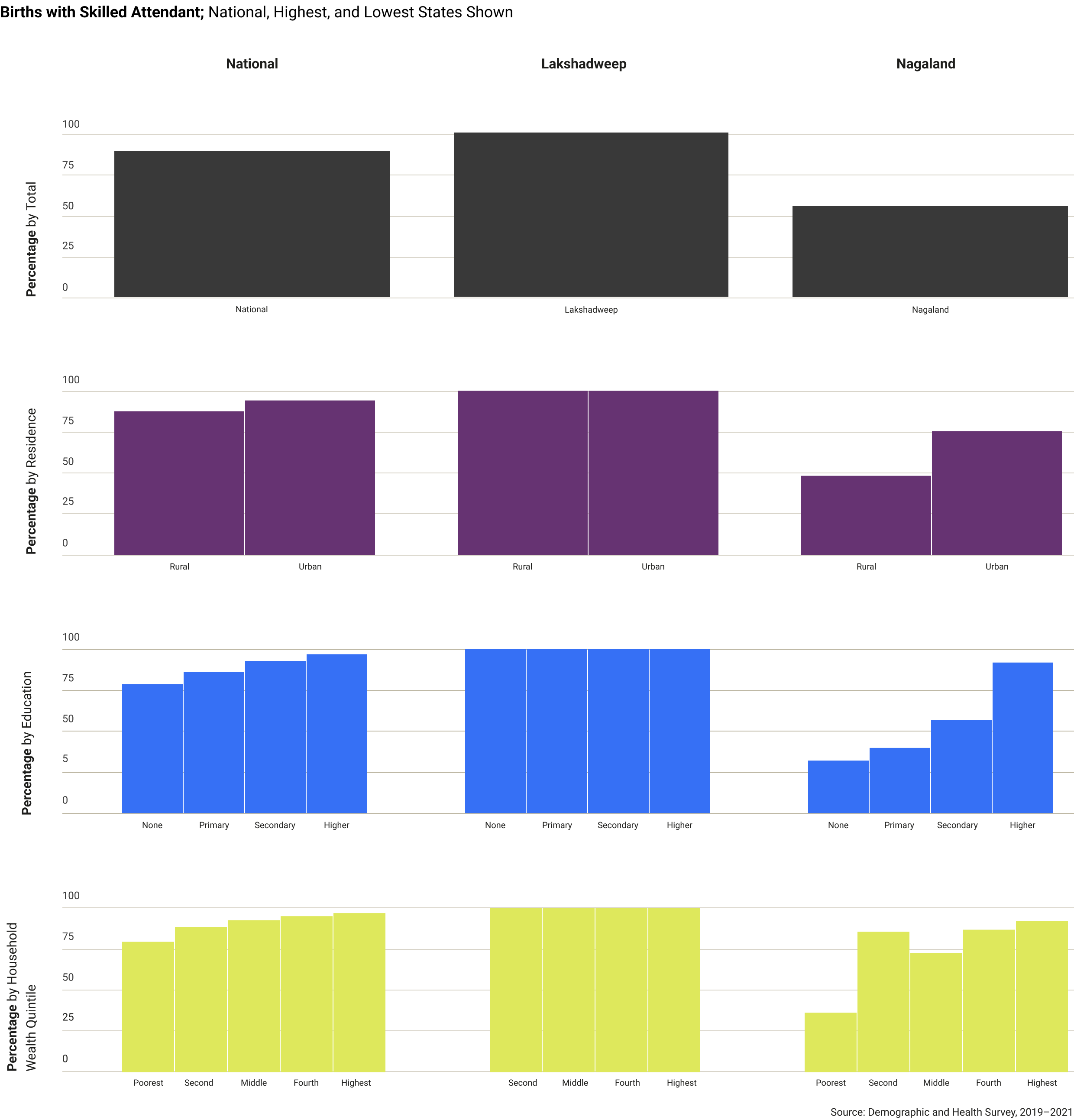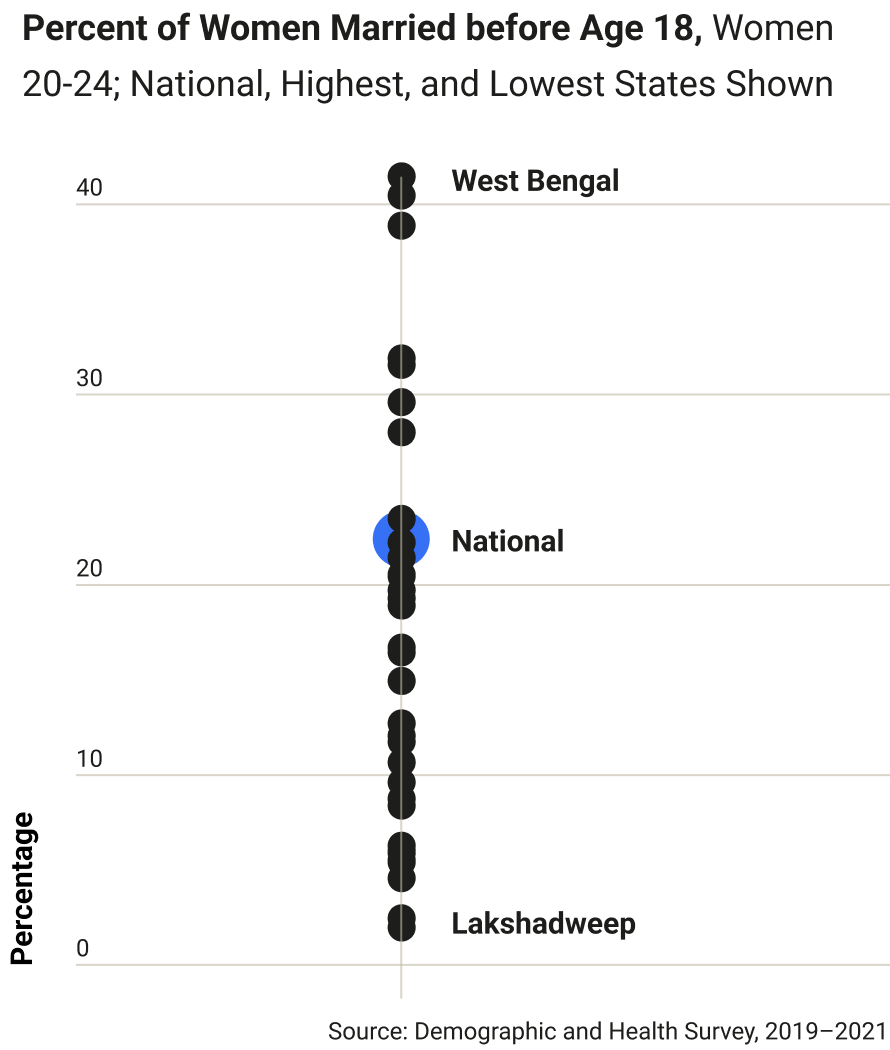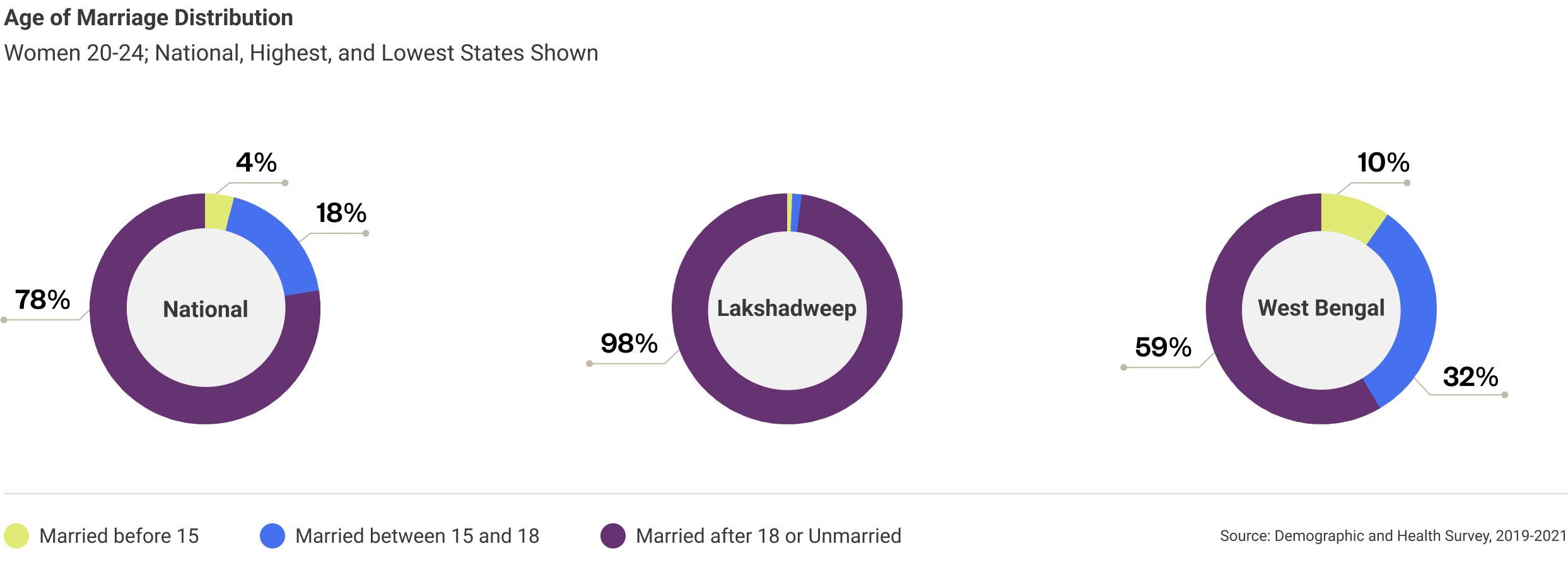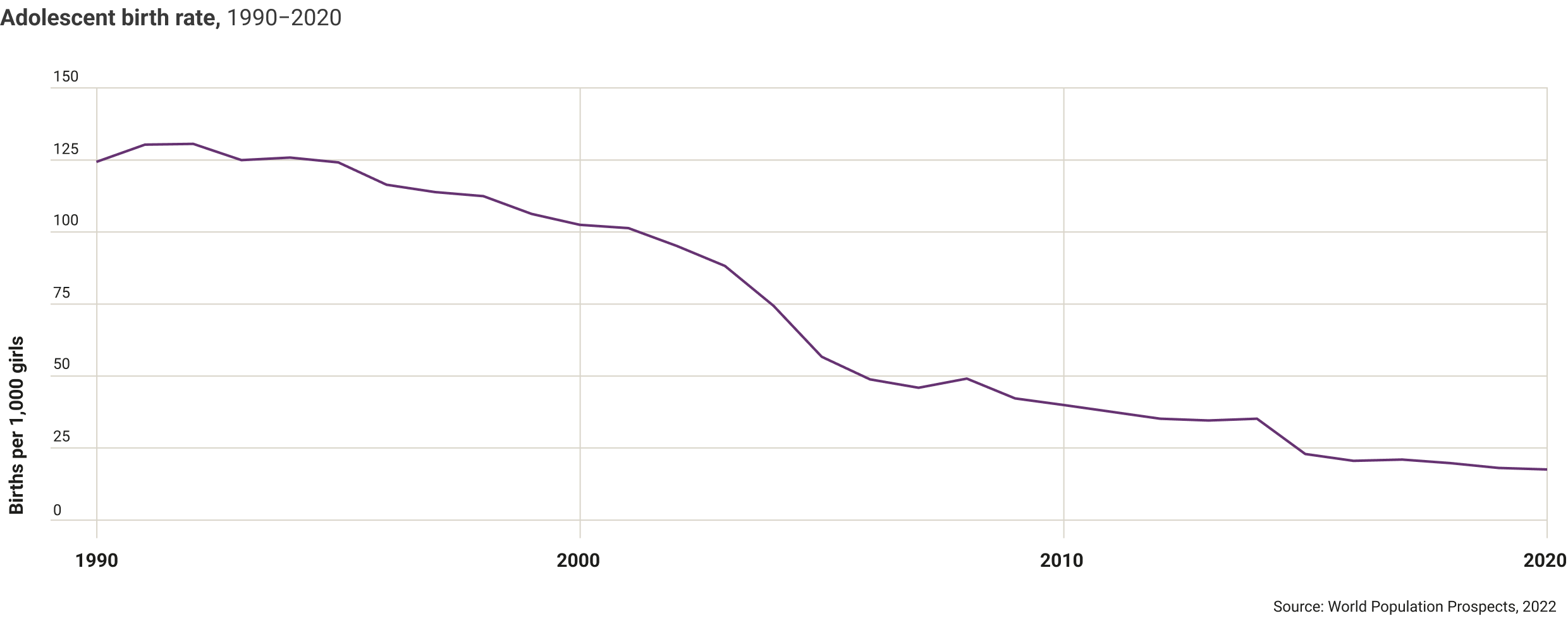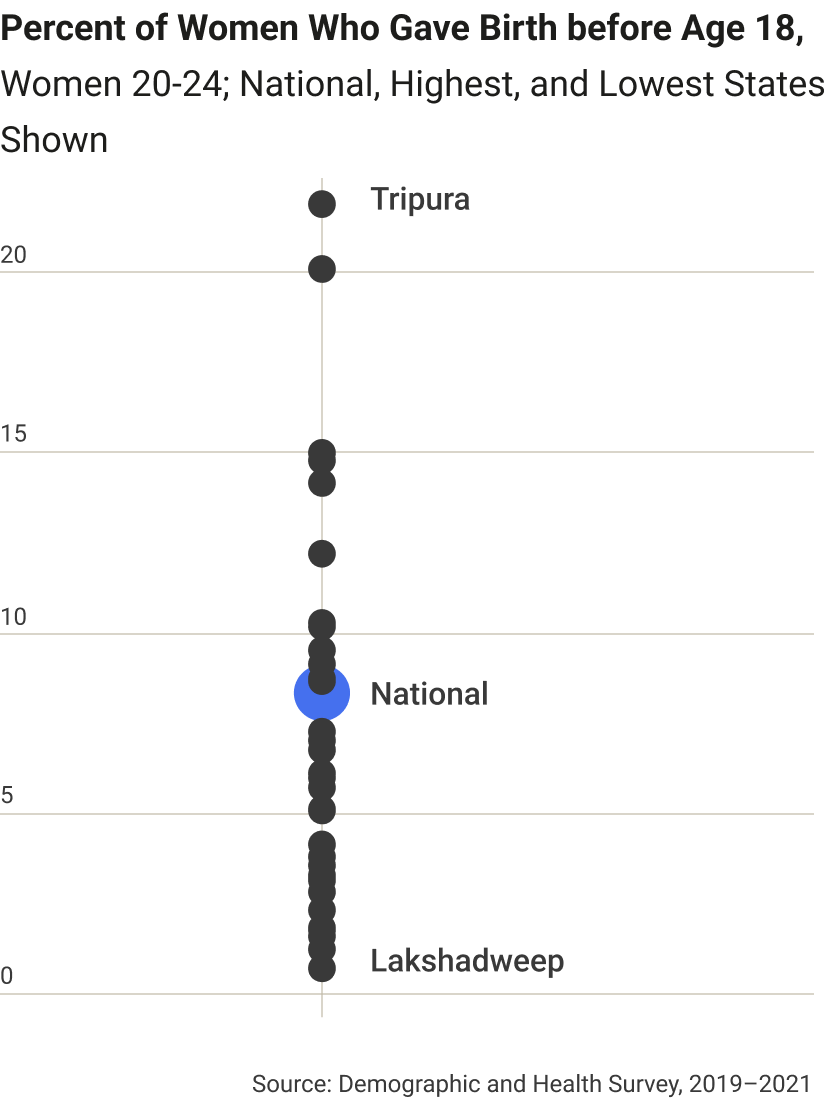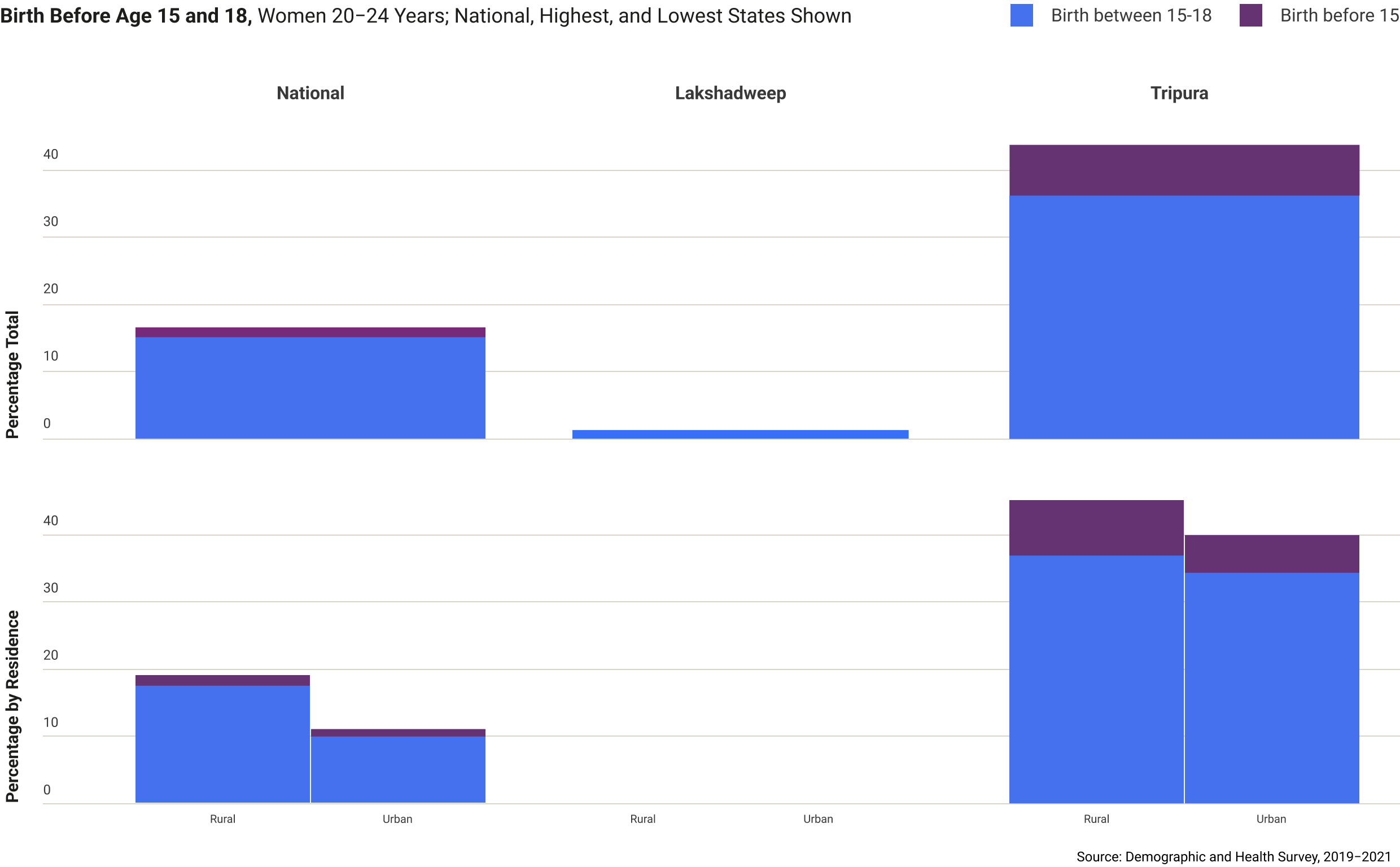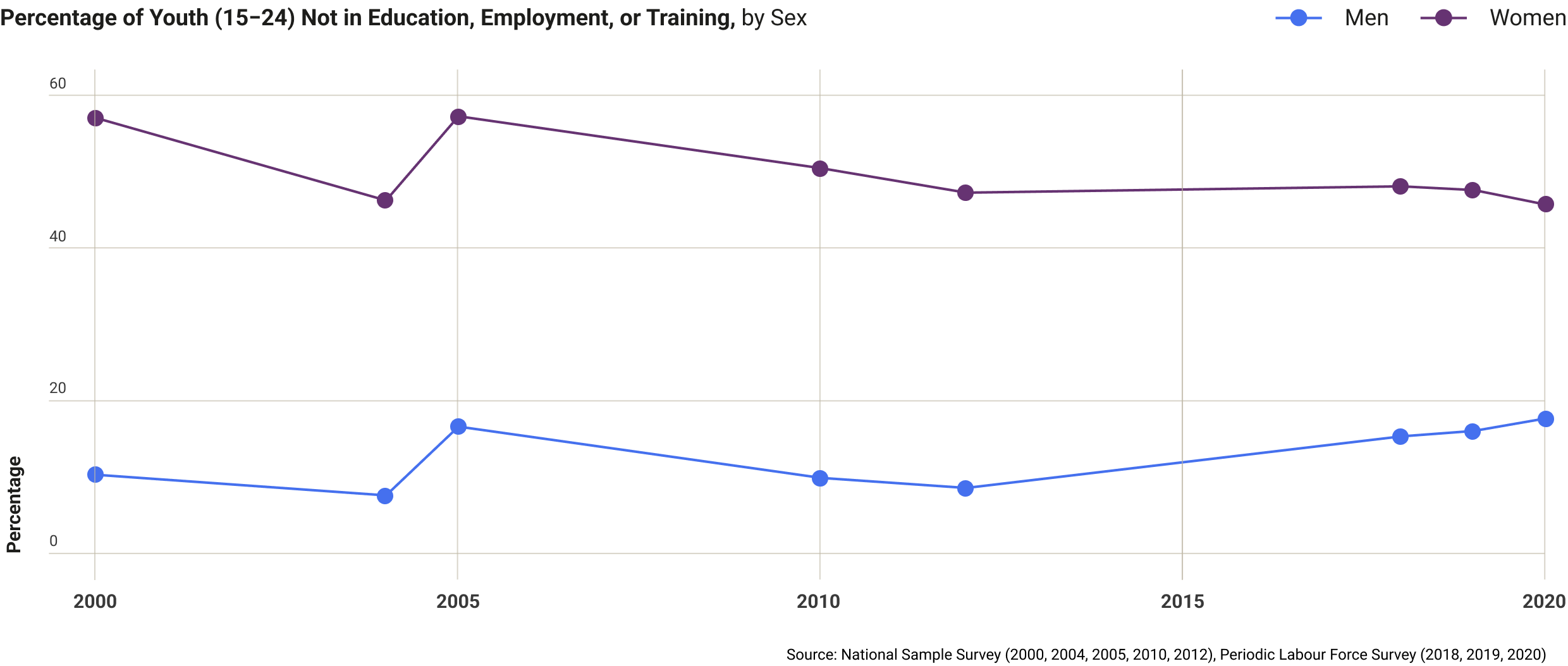
 1,435,228,800
Total Population
1,435,228,800
Total Population
A dispute exists between the Governments of Argentina and the United Kingdom of Great Britain and Northern Ireland concerning sovereignty over the Falkland Islands (Malvinas).
The boundaries and names shown and the designations used on this map do not imply official endorsement or acceptance by the United Nations.
India’s Population dynamics Data


Total Fertility Rate (births per woman)
Adolescent (15-19 years) Birth Rate (births per 1,000 girls)
Maternal mortality ratio (per 100,000 live births)
INDIA’S NATIONAL COMMITMENT
At the Nairobi Summit, the Republic of India committed to accelerating implementation and funding of the ICPD Programme of Action and 2030 Agenda for Sustainable Development. India has also committed to making Universal Health Coverage a reality for all. India has committed to substantially reducing the unmet need for contraception by 2030 by increasing the range of contraceptives and improving the quality of family planning services. The country has committed to advocate for voluntary and informed choice couples can freely and responsibly decide the number and spacing of their children.
Nationally, unmet need for family planning in India is 6.6%, ranging from 3.6% in Andhra Pradesh state to 16.7% in Meghalaya state.
Demand for family planning satisfied with modern methods is 75.5% nationally, ranging from 25.1% in Manipur to 94% in Andhra Pradesh.
At the national level, unmet need for family planning is relatively the same by residence and education, but decreases slightly as household wealth increases.
In Andhra Pradesh state, where unmet need for family planning is the lowest, women with no or primary education are primarily women 35 years and older, who are also more likely to be users of contraceptives for limiting births. Unmet need for family planning is highest in Meghalaya state; it is higher in rural areas, and decreases with higher levels of education and household wealth.
INDIA’S NATIONAL COMMITMENT
India has committed to achieving the SDG target of a maternal mortality ratio of less than 70 deaths per 100,000 live births by 2030 through Suman (Surakshit Matritva Aashwasan – safe motherhood benefit scheme).
India’s maternal mortality ratio has declined from 2000 to 2020,
the most recent year for which data is available and was estimated to be 102.65 deaths per 100,000 live births. The maternal mortality ratio is 1.5 times higher than the SDG target of 70 deaths per 100,000 live births.
Among married women 15-49 years in India who had a live birth in the last two years, approximately 89.4% of deliveries are assisted by a skilled attendant; this is one of the highest in the region.
Nationally, the percentage of deliveries assisted by a skilled attendant is higher in urban areas than rural areas (94% versus 87.8%), increases with higher levels of education and household wealth.
In Lakshadweep state, with the highest percentage of deliveries assisted by a skilled attendant, there is little variation by residence, level of education, or household wealth. In Nagaland state, the percentage of deliveries assisted by a skilled attendant is higher in urban areas increases with higher levels of education and household wealth.
INDIA’S NATIONAL COMMITMENT
India has committed to ensuring access for all adolescents and youth, especially girls, to comprehensive and age-responsive information, education and adolescent-friendly comprehensive, quality and timely health services under the Rashtriya Kishor Swasthya Karyakram (RKSK). India has also committed to addressing gender-based violence to achieve SDG 5.6.2 by eliminating all forms of violence against women and girls through improved implementation of various legislative frameworks and strengthened schematic interventions.
In India, 22.4% of women aged 20-24 years were married before age 18 including 4% married before age 15.
Since 1990 the adolescent birth rate in India has decreased.
Trends reveal that across the country it decreased from approximately 124.1 births per 1,000 girls in 1990 to approximately 17.3 births per 1,000 girls in 2020.
According to the latest Demographic and Health Survey, approximately 8.3% of women aged 20-24 years had a birth before age 18 nationally.
This ranges from 0.6% in Lakshadweep state to 21.9% in Tripura state. The percentage of women who had a birth before age 18 is higher in rural areas (nationally: 9.5%; Tripura state: 22.6%) than in urban areas (nationally: 5.5%; Tripura state: 20%).
In India, the percentage of youth not in education, employment or training increased among males from 10.3% in 2000 to 17.7% in 2020, while among women it decreased from 57% in 2000 to 45.7% in 2020.
During the 54th session of the United Nations Commission on Population and Development in 2021, the Minister of Health reiterated India's Nairobi commitments. The Government in partnership with UNFPA advocated in select States for the incorporation of mental health and psychosocial support within one-stop centers for women facing violence.
A significant step towards enhancing sexual and reproductive health and rights has been realized through the Amendments to the Medical Termination of Pregnancy Act (MTP Act 1971). This amendment permits abortion up to 24 weeks of pregnancy for all women, regardless of marital status.
India was reviewed at the 41st session of the Universal Periodic Review in November 2022. It received 339 recommendations, of which at least 138 (41% of all recommendations) were related to the Nairobi Summit on ICPD25.


